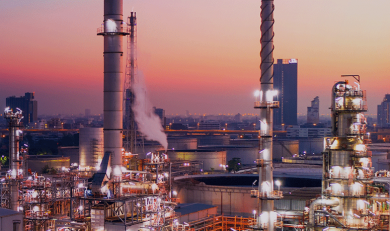
Ammonia Plant Product Distribution
01| Challenge
Background: Nearly all of the ammonia consumed in the USA is consumed in the farm belt, either in the form of Anhydrous Ammonia or its derivatives. Anhydrous ammonia can create clouds of toxic vapor when released. US ammonia production is dispersed (although much is produced in the farm belt),and has historically been delivered to high corn producing areas via 2 different pipeline systems. Numerous stakeholders have expressed concern about high-pressure anhydrous Ammonia pipeline distributions due to the risk of toxic gas release. These pipelines, while largely rural, pass through more densely populated areas as well.
Situation: A large ammonia producer shipped most of their product via the pipeline system. This producer wanted to understand the impact to their business in the event of a disruption in the downstream pipeline.
02| Solution
Study methodology:
- Review historical short outages (such as for pipeline maintenance) to understand the business impact.
- Develop a POV (point of view) on the likelihood that the pipeline system may be permanently shut down due to risk concerns.
- Determine and review possible mitigations in the event of a pipeline outage of extended duration.
Results of analysis:
- A pipeline outage would require the facility to store Anhydrous Ammonia during the outage or reduce production. Typically, the facility would see little impact over an outage lasting less than 1 week.
- Pipeline outages were increasing in both frequency and duration to perform needed repairs to the aging system.
- Risk concerns were being expressed more ardently by a variety of stakeholders, leading to an increased probability of a permanent shutdown of the pipeline.
- Shipment of anhydrous ammonia by another method (long haul truck) was found to be cost-prohibitive.
- Absent other changes, facility viability would be a concern (would have to operate at well under 50% capacity.
Modifications made:
- Made the proactive decision to invest in downstream ammonia derivatives (Urea, UAN) to lessen the potential impact.
03| Results
- Shortly after the startup of the new ammonia derivative production, the pipeline company made the independent decision to permanently shut down the pipeline.
- The facility, although impacted by the loss of direct anhydrous ammonia shipment, was able to continue operating profitably.
CONTINUED PRODUCTION VS SHUTDOWN
[/vc_column_text]
Download




